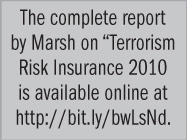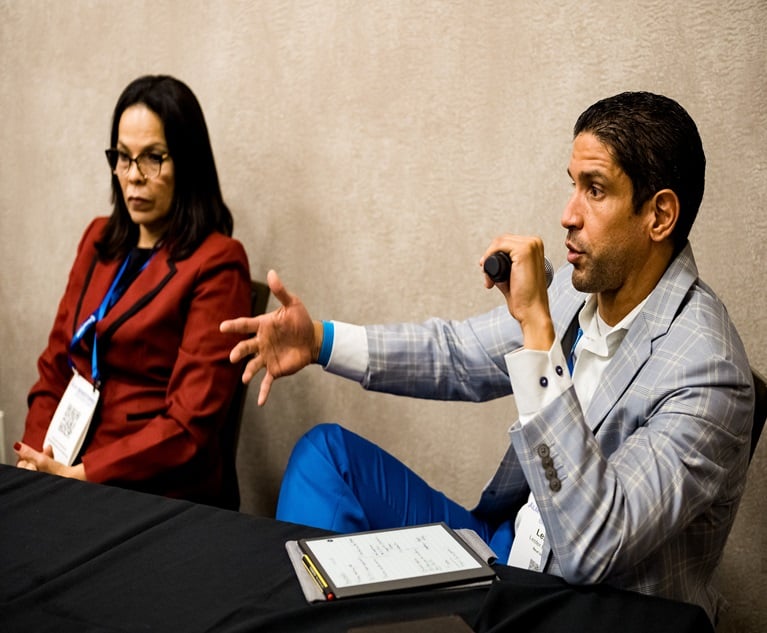The property insurance take-up rate for terrorism coveragecontinues to rise, with 61 percent of companies surveyed by Marsh–arecord high–buying the additional protection against catastrophicrisk.
|In its “Terrorism Risk Insurance 2010″ market report, Marsh saidthe number of purchasers has continued to rise since 2003, whenonly 27 percent of those surveyed bought property terrorismcoverage. In 2008, the number had dropped from a high of 59 percentto 57 percent.
|In 2009, companies in the utility, real estate, health care,transportation, financial institution and media industries led theway in purchasing property terrorism insurance, with take-up ratestopping 70 percent.
| Manufacturing, food and beverage, and energy were on thelow end at less than 50 percent. Energy had the lowest take-up rateat 40 percent.
Manufacturing, food and beverage, and energy were on thelow end at less than 50 percent. Energy had the lowest take-up rateat 40 percent.
Price may be playing a part in spurring more buyers to purchasethe coverage. Indeed, the median premium rate for terrorismplummeted by more than one-third–from $37 per million of totalinsured value in 2008, to $25 per million last year.
|However, prices are not uniform, with construction, hospitality,utility and real estate seeing the highest median premium rateslast year, at $50 per million of total insured valued.
|In terms of pricing as a percentage of overall propertypremiums, financial institutions and transportation paid thelargest share at 24 percent and 17 percent, respectively, Marshnoted in its report.
|On the other hand, hospitality firms witnessed the largestdecrease, from 13 percent in 2008 to 4 percent last year.
|Capacity in the stand-alone terrorism market is estimated to be$3.76 billion, offering coverage for both Terrorism Risk InsuranceAct-certified and noncertified risks.
|Insurers remain cautious about accumulating too much terrorismrisk, according to Marsh. They continue to avoid gathering too muchexposure in “high-profile urban” areas and are concerned with “theresidual risk of terror events,” the brokerage observed.
|Reinsurers offer terrorism risk on a stand-alone basis, and anestimated $700 million of per-occurrence is available, the reportnoted. “For certain programs, notably workers' compensationprograms where the terrorism exposure is limited to a single state,it is feasible to secure more than $1 billion of capacity,” Marshsaid.
|Marsh said captives are viable vehicles for companies to coverterrorism exposures, especially as a way to control the cost of theprogram. “There are several key areas of opportunity to enhanceTRIA coverage via use of a captive,” the report suggested. “Becauseproperty policies typically exclude these coverages or becausecosts of insuring such risks are generally prohibitive, using acaptive to provide the coverages can be particularlybeneficial.”
|In its report, Marsh said the industry still needs a number ofyears to develop the surplus needed to cover another Sept. 11event, adding that a joint public-private sector program will beneeded long-term.
|The brokerage warned that without that partnership, an economicdownturn is a real possibility.
Want to continue reading?
Become a Free PropertyCasualty360 Digital Reader
Your access to unlimited PropertyCasualty360 content isn’t changing.
Once you are an ALM digital member, you’ll receive:
- All PropertyCasualty360.com news coverage, best practices, and in-depth analysis.
- Educational webcasts, resources from industry leaders, and informative newsletters.
- Other award-winning websites including BenefitsPRO.com and ThinkAdvisor.com.
Already have an account? Sign In
© 2024 ALM Global, LLC, All Rights Reserved. Request academic re-use from www.copyright.com. All other uses, submit a request to [email protected]. For more information visit Asset & Logo Licensing.








